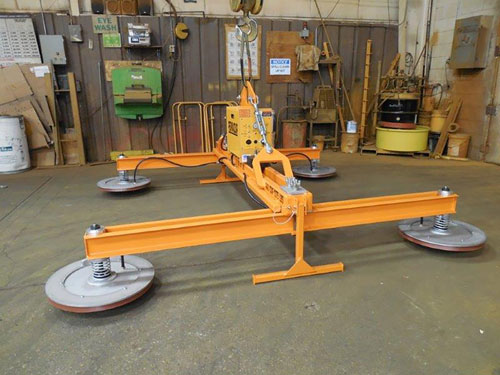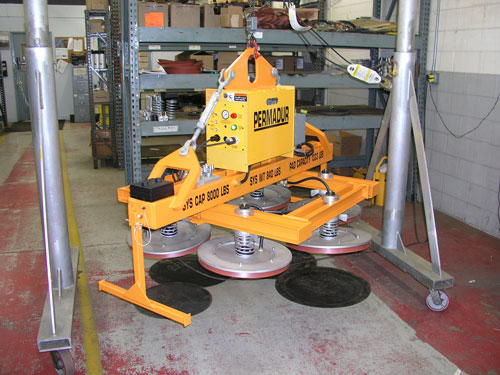 Material handling covers many tools and techniques, each with strengths and weaknesses. Traditional lifting methods have served us well, but as our needs evolve, so does technology. Traditional lifting techniques, such as forklifts and crane systems, have been the backbone of industries for decades. They offer reliable lifting power and are often considered the "go-to" for heavy-duty material handling. Vacuum lifting is a relatively new player in the field. Using suction to lift and move objects, vacuum lift systems present a unique set of benefits over traditional methods.
Material handling covers many tools and techniques, each with strengths and weaknesses. Traditional lifting methods have served us well, but as our needs evolve, so does technology. Traditional lifting techniques, such as forklifts and crane systems, have been the backbone of industries for decades. They offer reliable lifting power and are often considered the "go-to" for heavy-duty material handling. Vacuum lifting is a relatively new player in the field. Using suction to lift and move objects, vacuum lift systems present a unique set of benefits over traditional methods.
Vacuum Lifting Versus Traditional Lifting
The advantages of vacuum lifting often shine through when comparing vacuum lifting and traditional methods.
- Speed and Efficiency: In operations where speed is paramount, vacuum lifting often outperforms traditional methods. It can handle multiple items simultaneously and requires fewer manual adjustments, resulting in quicker turnaround times.
- Safety and Risk Mitigation: Vacuum lifting offers superior safety features. By using suction, it reduces the risk of damage to materials and potential workplace accidents, a significant advantage over traditional lifting methods that often rely on hooks or clamps.
Versatility in Handling Different Materials
One area where vacuum lifting truly stands out is its versatility. It can easily handle objects of various shapes, sizes, and weights. There are situations where vacuum lifting is the clear winner. Vacuum lifting is often the wise choice for:
- Delicate or Fragile Materials: For handling delicate or fragile materials, vacuum lifting minimizes the risk of damage. Traditional methods can apply excessive pressure or cause scratching, while vacuum lifting gently lifts the object with evenly distributed force.
- Large, Flat Objects: Large, flat objects like sheets of metal or glass can be challenging to lift with traditional methods. Vacuum lifting, however, can easily manage these items thanks to its evenly distributed suction force.
- Quick Turnaround Times: In fast-paced industries where turnaround times are crucial, vacuum lifting excels. Its ability to handle multiple items simultaneously and rapidly adjust to different tasks can drastically reduce operation times.
Key Considerations When Choosing Vacuum Lifting
Before deciding on vacuum lifting, assessing your specific needs and considering the potential benefits is essential. You need to determine your needs andevaluate your current material handling process. Identify areas where improvements can be made. Could vacuum lifting address these areas? Would faster operations, improved safety, or greater versatility make a significant difference?
While vacuum lifting isn't the answer for all situations, it certainly has its place in material handling. By understanding when it shines, you can make an informed decision, enhancing your operations' efficiency, safety, and flexibility.


